Taro Coconut Sago is a sweet and creamy dessert consists of cooked tapioca pearls, taro chunks, coconut milk, and sweetener. It can be served either hot or cold. The taro adds a subtly vanilla and earthy flavor and creamy texture. It is the perfect dessert to satisfy sweet cravings all year round.

I grew up eating Taro Coconut Sago. Here is a funny story. The first time I had taro coconut sago was at my aunt's house. I instantly fell in love with this sweet and delightful dessert. I always thought that my aunt was the original creator of taro coconut sago. My aunt later told me that she had taro coconut sago at a restaurant and decided to make her own at home WITHOUT a recipe. So in a way, she did create the recipe. And that recipe, is the one I am sharing with you here! It is so simple and only requires 5 ingredients.
WATCH TARO COCONUT SAGO RECIPE VIDEO BELOW:

WHAT IS TARO?
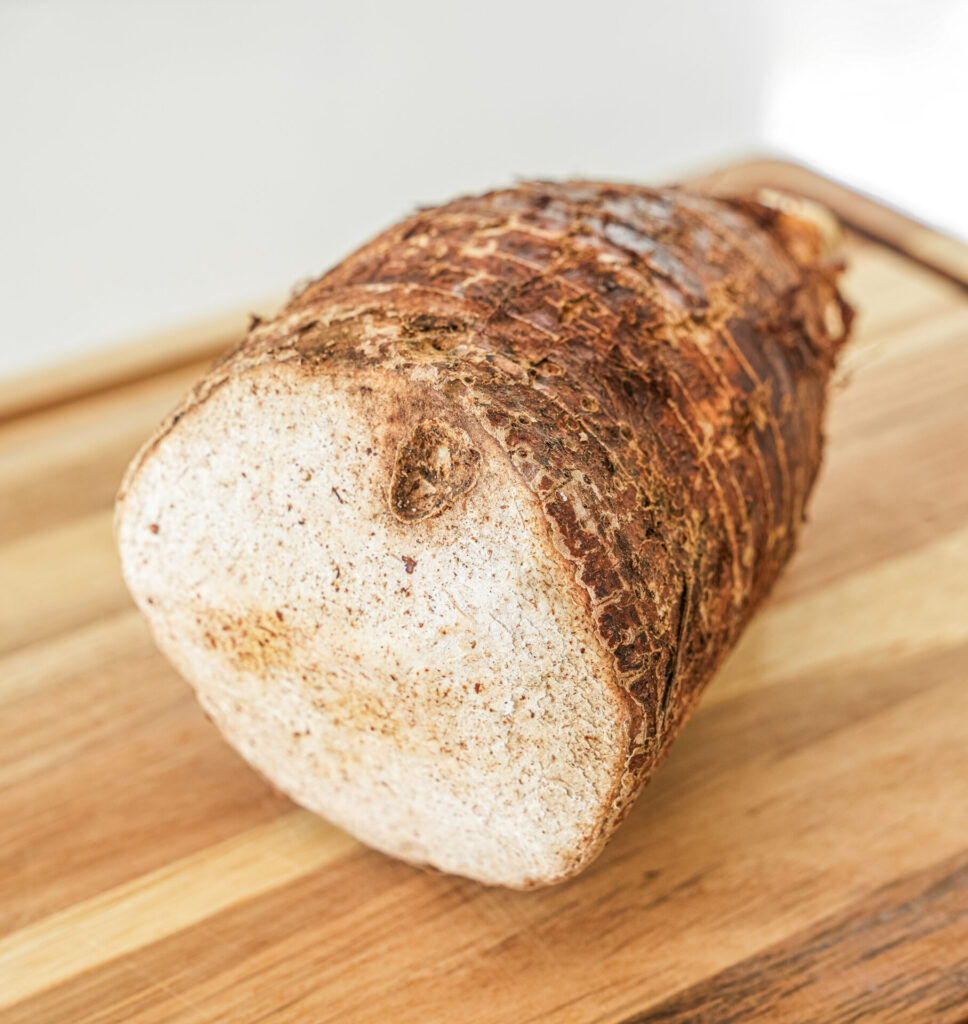
Taro is a starchy root vegetable that is widely consumed in Asia, Africa, the Caribbean, and the Pacific Islands cultures. Taro has a tough, brown outer skin with a cream-white and light grey-purple flesh. You might know taro from boba tea, but there is so much more to this starchy vegetable. It can be cooked in numerous ways, including boiling, steaming, frying, and baking. The flavor is taro is mild, slightly nutty, and earthy.
My favorite way of enjoy taro is making it into a dessert. When cooked, taro becomes smooth and creamy, adding a distinctive sweetness to the dish. Taro is a very versatile and nutritious root vegetable that can add depth and flavor to a wide range of dishes, making it a popular ingredient in many cuisines around the world.
WHAT IS SAGO?
Sago is a starchy substance extracted from tropical palm trees. It is commonly found in Asian desserts. Sago can be boiled, steamed, or used in desserts, soups, and beverages. Like tapioca, sago are small spherical pearls that become transparent when boiled. Although sago and tapioca are similar in appearance, they are derived from a different plant source. Tapioca pearls are made from tapioca starch, which is extracted from the cassava root.
If you google “Sago,” you can find that most sago recipes use tapioca pearls, instead of real sago pearls. That is because sago palms take a long time to harvest, making it very labor intensive and costly. Nowadays, sago pearls are harder to find when compared to tapioca. You can pretty much find tapioca pearls in any Asian grocery store or here. Due to this reason, I am using tapioca pearls as a substitute in this recipe.
INGREDIENTS
You only need 5 ingredients!
- Tapioca Pearls
- Water
- Taro
- Rock Sugar
- Coconut Milk
HOW TO MAKE TARO COCONUT SAGO?
Cook Tapioca Pearls
BOIL: Bring 5 cups of water to boil. Once the water boils, reduce the heat to a simmer and add the tapioca pearls. Cook the pearls for about 15 minutes, stirring constantly to prevent sticking. After about 15 minutes, the pearls should look translucent. Turn off the heat and cover the pot with a lid. Let the pearls sit for another 10-15 minutes before rinsing the pearls.

STRAIN and RINSE: Once the pearls are cooked and turned translucent, strain them through a fine mesh sieve and rinse off the excess starch with cold running water. Fill a separate large bowl with cold water. After rinsing, transfer the cooked pearls to cold water to cool them down. Set aside.

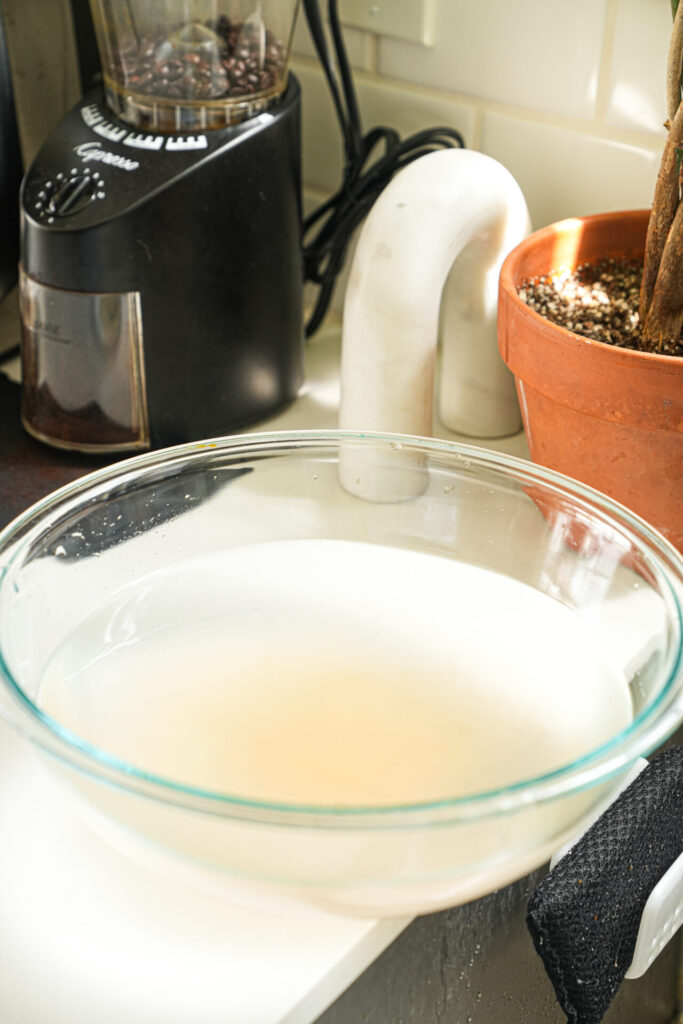
PEEL & DICE TARO
Use your knife to carefully peel away the rough outer skin of taro. Then cut taro into big cubes or chunks. It is okay if the cubes are not exactly the same size. Once cooked, some of the taro chunks will become creamy and melt into the dessert soup, adding more flavor and texture.
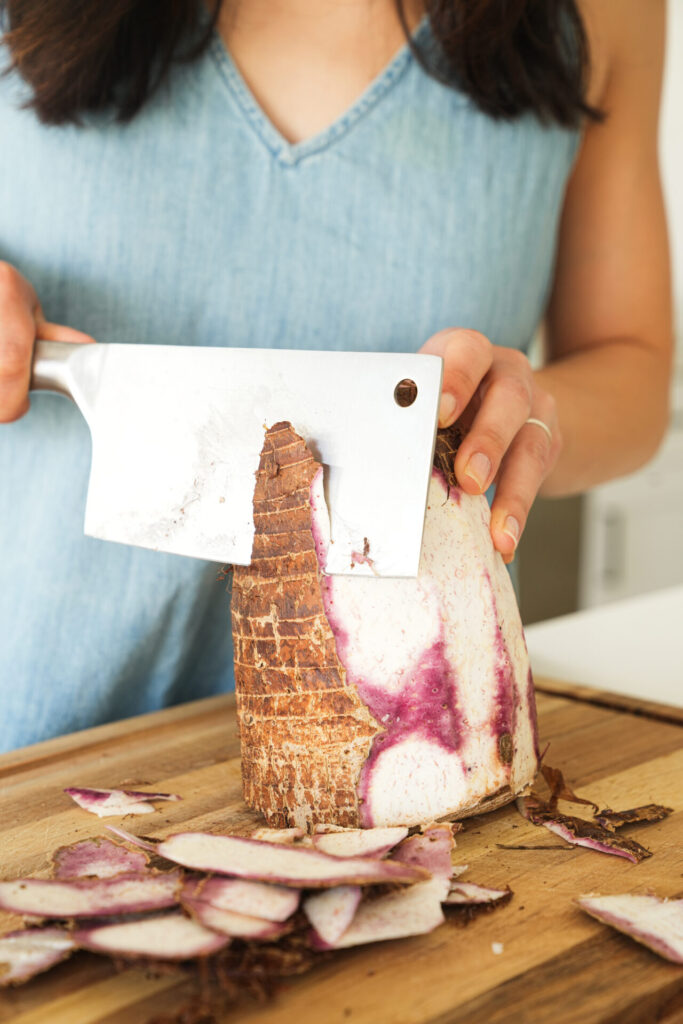

I recommend wearing gloves when handling raw taro. Raw taro can sometimes be very tough and starchy, causing skin dryness and irritation.
ADD WATER AND SUGAR
In a large pot, add taro cubes, rock sugar, and water. I added about 5 cups of water, just enough to cover the taro cubes. Adjust the amount of water depending on the size of the pot you are using. All taro cubes should be covered by water.
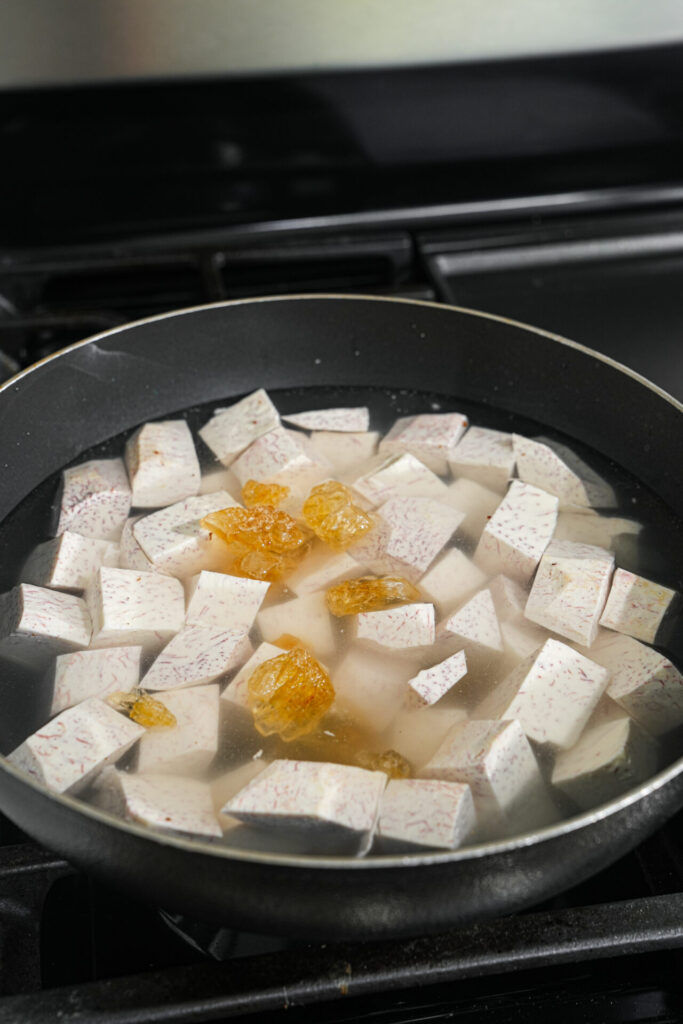
COOK AND SIMMER

Bring the water into a boil, then reduce heat and let is simmer. Simmer for about 20 minutes, or until the taro is soft. To check to see if the taro is cooked or not, use a fork and chopstick and stick it into a taro cube. It should go in easily.
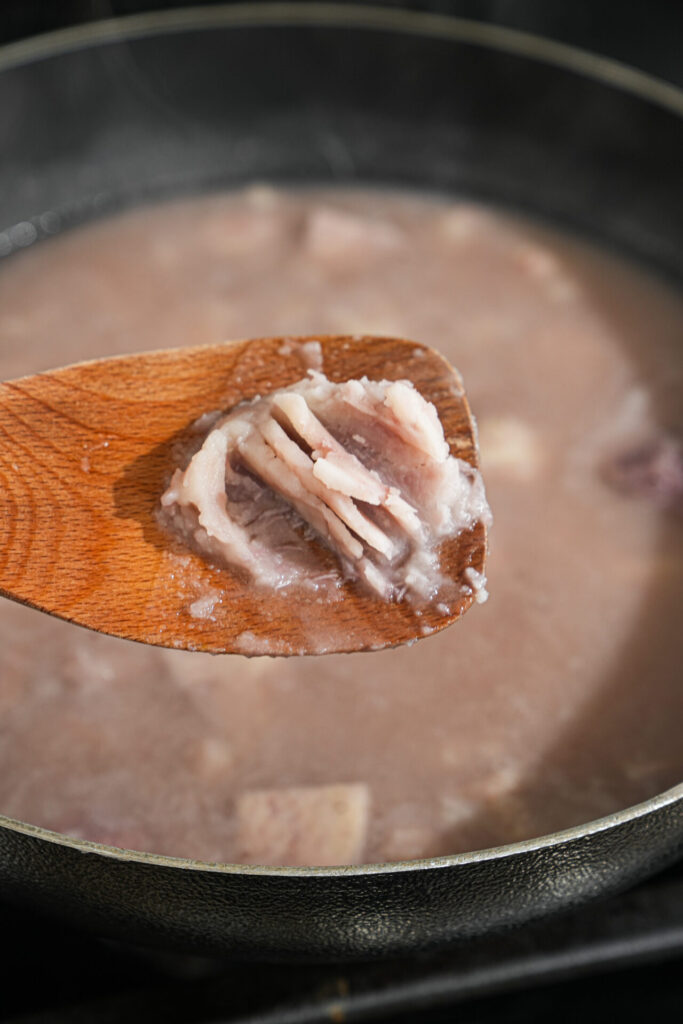
ADD COCONUT MILK AND TAPIOCA PEARLS

Add coconut milk into the pot and cook for another 5 minutes. Taste and add more sugar is you desire. I ended up adding 20grams of rock sugar in the end.
Drain tapioca pearl and add to the taro coconut soup. Stir and ready to serve! It can be served hot or cold. If you prefer serving it cold, chill taro coconut sago in the refrigerator overnight.
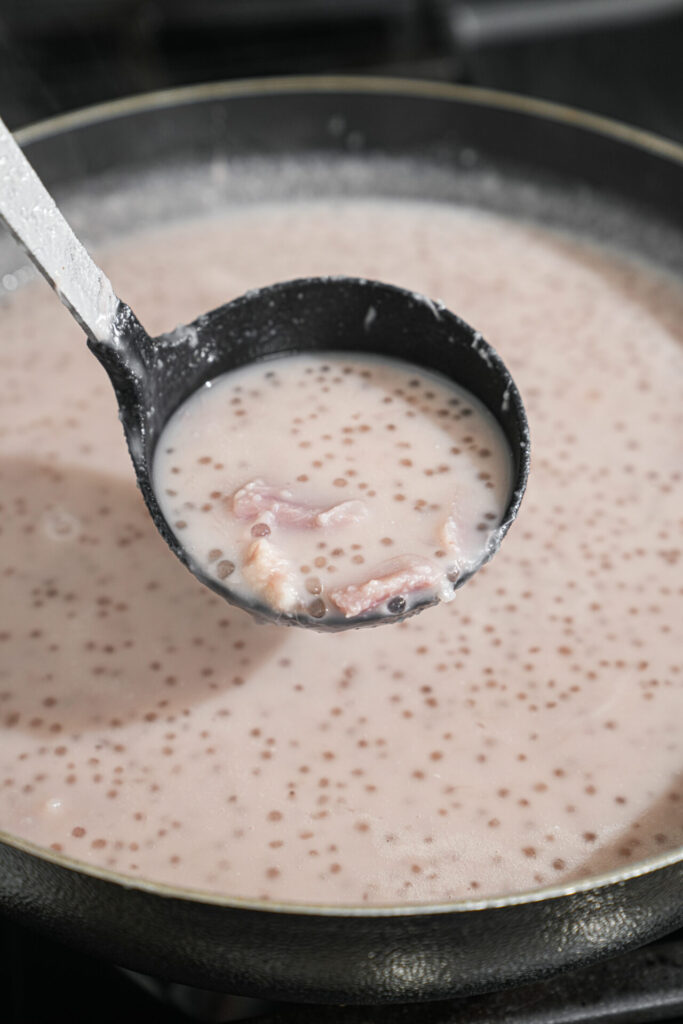
WHAT IF I DON'T HAVE ROCK SUGAR?
Rock sugar is typically used to make authentic taro sago. It is less sweet than white sugar. Rock sugar is a type of crystalline sugar typically made from cane sugar. It is characterized by its large, translucent crystal, which resemble small rocks, hence the name "rock sugar," or "冰糖." You can find rock sugar in any Asian grocery store.
Can I substitute rock sugar?
Yes, you can. If you cannot find rock sugar, you can use regular white granulated sugar as substitute. However, know that white granulated sugar is sweeter than rock sugar. So I would recommend adding less than what the recipe asks for in the beginning. You can always taste and add more sugar in the end if you desire.

TIPS:
- I recommend wearing gloves when handling raw taro. Raw taro can sometimes be very tough and starchy, causing skin dryness and irritation.
- Cut the taro into bigger cubes if you like larger taro chunks in the sago.
- Wait until the water starts boiling before adding tapioca pearls. Tapioca pearls might melt together if you add them to the water too early.
- Make sure the tapioca pearls are cooked through and translucent. If the pearls are hard or still have white dot in the center, that means they are not ready yet.
- Strain cooked tapioca pearls under cold running water. This can help prevent the pearls from sticking.
- If you like thicker and creamier consistency, you can simmer taro coconut sago for a longer time.
OTHER ASIAN DESSERT RECIPES YOU MAY ENJOY:
- Matcha Strawberry Sago
- Taro Coconut Shortbread Cookies
- TAIWANESE TARO AND SWEET POTATO BALLS DESSERT
- HEART SHAPED TARO ALFAJORES COOKIES
If you make this recipe, please leave a comment below and let me know what you think. Make sure you also tag me @onehappybite on Instagram and hashtag it #onehappybite so I can see your creations!
Print
Taro Coconut Sago
- Prep Time: 10
- Cook Time: 35
- Total Time: 45 minutes
Description
Taro Coconut Sago is a sweet and creamy dessert consists of cooked tapioca pearls, taro chunks, coconut milk, and sweetener.
Ingredients
- 2 lb Taro, cut into large cubes
- ½ cup tapioca pearls
- 5 cups water
- 1 (13.5oz) can coconut milk
- 100g rock sugar, plus more if you prefer sweeter sago
Instructions
Cook Tapioca Pearls
- Fill a pot with 5 cups of water. Bring to a boil.
- Once the water boils, reduce the heat to a simmer and add the tapioca pearls. Cook the pearls for about 15 minutes, stirring constantly to prevent sticking. After about 15 minutes, the pearls should look translucent. Turn off the heat and cover the pot with a lid. Let the pearls sit for another 10-15 minutes before rinsing the pearls.
- Once the sago pearls are cooked and translucent, remove from heat and strain them through a fine mesh sieve and rinse off the excess starch with cold running water. Fill a separate large bowl with cold water. After rinsing, transfer the cooked pearls to cold water to cool them down. Set aside.
Taro Coconut Sago
- In a large pot, add taro cubes, rock sugar, and water. I added about 5 cups of water, just enough to cover the taro cubes. Adjust the amount of water depending on the size of the pot you are using. All taro cubes should be covered by water.
- Bring water to a boil, then reduce down to a simmer. Let is simmer for about 20 min, under taro is soft. To check to see if the taro is cooked or not, use a fork and chopstick and stick it into a taro cube. It should go in easily.
- Add coconut milk and cook for another 5 minutes. Taste and add more rock sugar is you desire.
- Drain tapioca pearl and add to the taro coconut soup. Stir and ready to serve! It can be served hot or cold.
Notes
If you like thicker and creamier consistency, you can simmer taro coconut sago for a longer time.






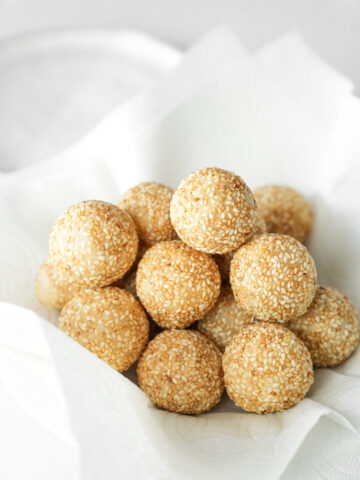
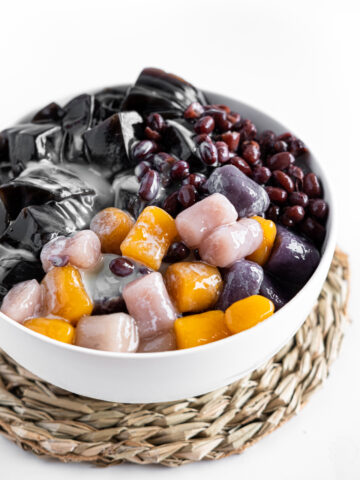
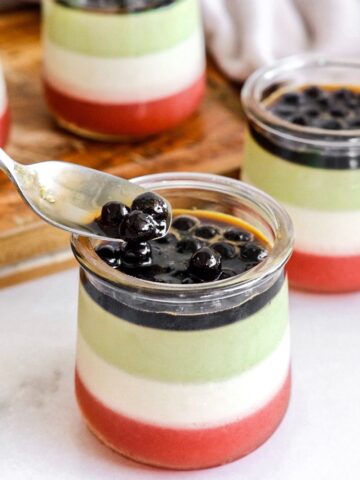
Leave a Reply